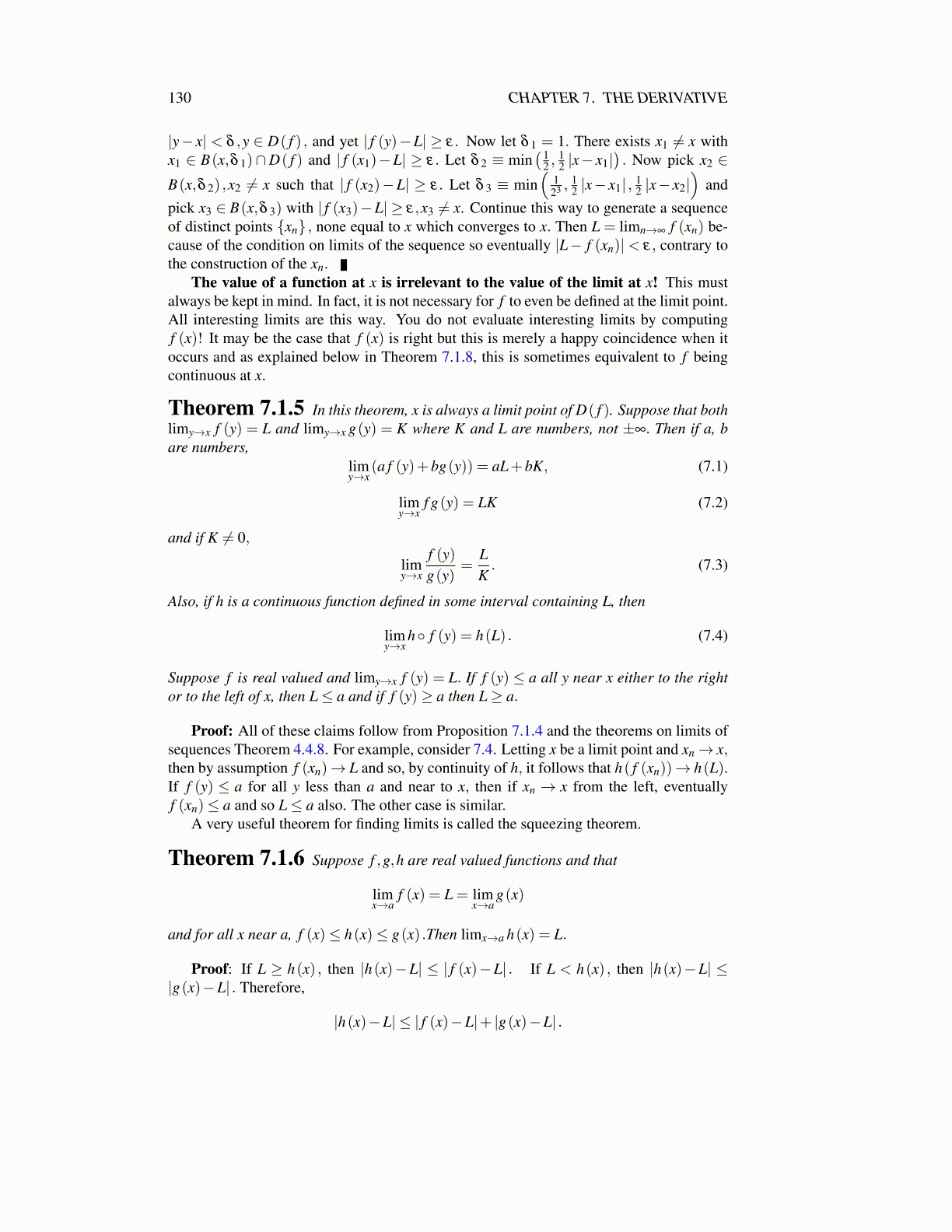
130 CHAPTER 7. THE DERIVATIVE
Example 7.1.12 Show limx→a√
x =√
a whenever a ≥ 0. In the case that a = 0, take thelimit from the right.
There are two cases. First consider the case when a > 0. Let ε > 0 be given. Multiplyand divide by
√x+√
a. This yields
∣∣√x−√
a∣∣= ∣∣∣∣ x−a√
x+√
a
∣∣∣∣ .Now let 0 < δ 1 < a/2. Then if |x−a|< δ 1,x > a/2 and so
∣∣√x−√
a∣∣= ∣∣∣∣ x−a√
x+√
a
∣∣∣∣≤ |x−a|(√a/√
2)+√
a≤ 2√
2√a|x−a| .
Now let 0 < δ ≤min(
δ 1,ε√
a2√
2
). Then for 0 < |x−a|< δ ,
∣∣√x−√
a∣∣≤ 2
√2√a|x−a|< 2
√2√a
ε√
a2√
2= ε.
Next consider the case where a = 0. In this case, let ε > 0 and let δ = ε2. Then if0 < x−0 < δ = ε2, it follows that 0≤
√x <
(ε2)1/2
= ε.
7.2 Exercises1. Find the following limits if possible
(a) limx→0+|x|x
(b) limx→0+x|x|
(c) limx→0−|x|x
(d) limx→4x2−16x+4
(e) limx→3x2−9x+3
(f) limx→−2x2−4x−2
(g) limx→∞x
1+x2
(h) limx→∞−2 x1+x2
2. Find limh→0
1(x+h)3
− 1x3
h .
3. Find limx→44√x−√
2√x−2 .
4. Find limx→∞
5√3x+ 4√x+7√
x√3x+1
.
5. Find limx→∞(x−3)20(2x+1)30
(2x2+7)25 .
6. Find limx→2x2−4
x3+3x2−9x−2 .
7. Find limx→∞
(√1−7x+ x2−
√1+7x+ x2
).
8. Prove Theorem 7.1.3 for right, left and limits as y→ ∞.
9. Prove from the definition that limx→a3√
x = 3√
a for all a ∈ R. Hint: You might wantto use the formula for the difference of two cubes,
a3−b3 = (a−b)(a2 +ab+b2) .
10. Prove Theorem 7.1.8 from the definitions of limit and continuity.